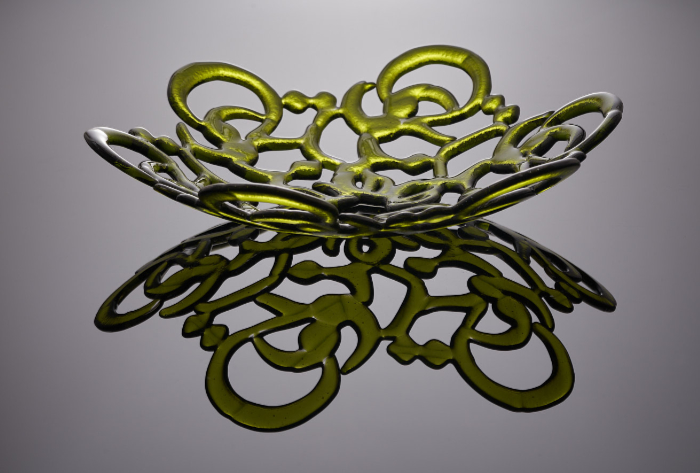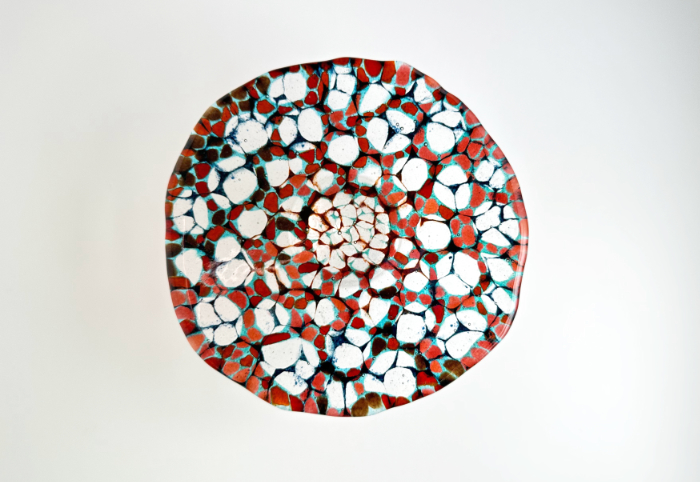
Under the microscope: interview with Rachael Durkan
Rachael Durkan has a fascination with the intricate patterns of nature at a cellular level. Through careful, kiln-formed glass fusing, she captures the transience of organic matter and shares her wonder with the viewer. Linda Banks finds out more.
You are a skilled artist with a background in sculpture and printmaking. What led you to start working with glass?
I completed my BA (Hons) in Fine Art in Newcastle in the late 1990s. The work I produced during this time was inspired by patterns found in nature and organic matter. I enjoyed practising close-up photography, which influenced my sculptural forms and printmaking. My sculptural work focused on light projecting through organic forms to reveal intricate patterns, so when I discovered glass, I knew I had found a material I was excited to explore.
After completing my degree my path led me into computer-aided art and design and I worked in the website design industry for many years.
I began an evening course in stained glass at Bristol School of Art and Design, where I was introduced to kiln-formed glass. Since 2017 working with glass has been my full-time occupation and passion.
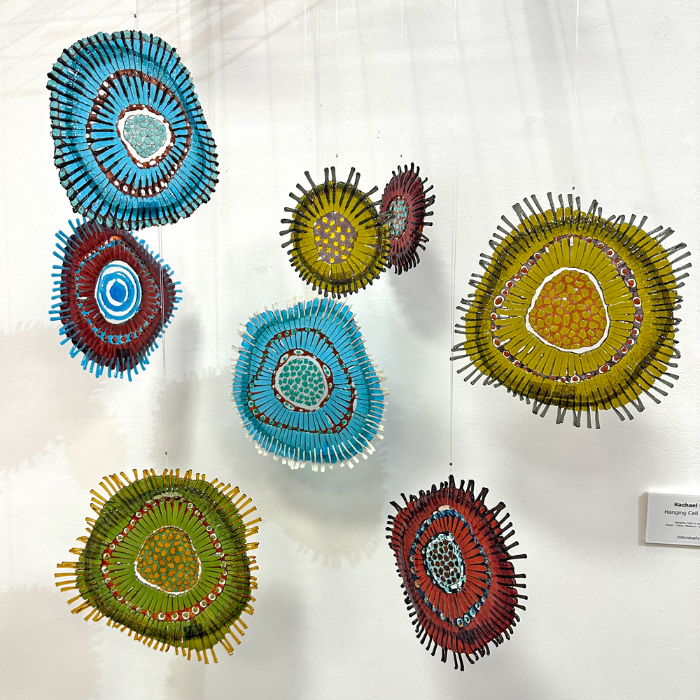
What glass techniques have you used, and which do you prefer?
I have explored many glass techniques that have expanded my knowledge and understanding of this material. This, in turn, helps me achieve the finished effect I am aiming for in a piece. I am particularly interested in reactions – the effects that can be captured within the glass when you combine certain colours and styles.
I strive to give the patterns and shapes in a piece extra definition by choosing colours that will react, and subsequently define, the many small shapes.
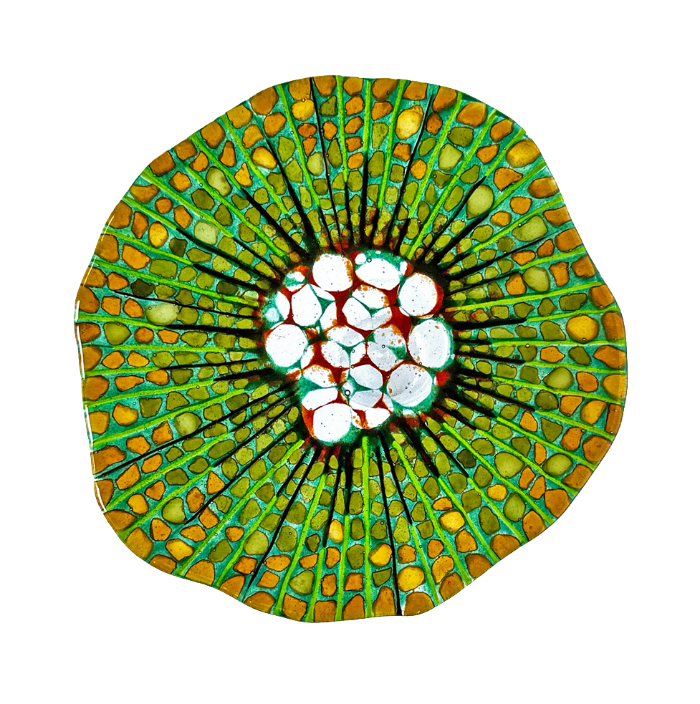
What is your creative approach? Do you draw your ideas out or dive straight in with the materials?
First, I sketch out my design idea, then work out how I intend to build the different sections and layers of the piece and what colour palette I want to use. At this stage I have to consider the pattern of the piece and try to visualise how the individual layers will look when overlayed and how the colours will work together and react.
Often, segments of my work are designed to be flipped over after their first firing, as I prefer the definition that is achieved on the kiln shelf side.
I also need to consider how individual elements will be fired, so I can achieve the texture I want from the final piece.
I then take a deep breath… and cut lots of glass shapes ready to get stuck in and build the piece. From this point on I work intuitively and let the form flow.
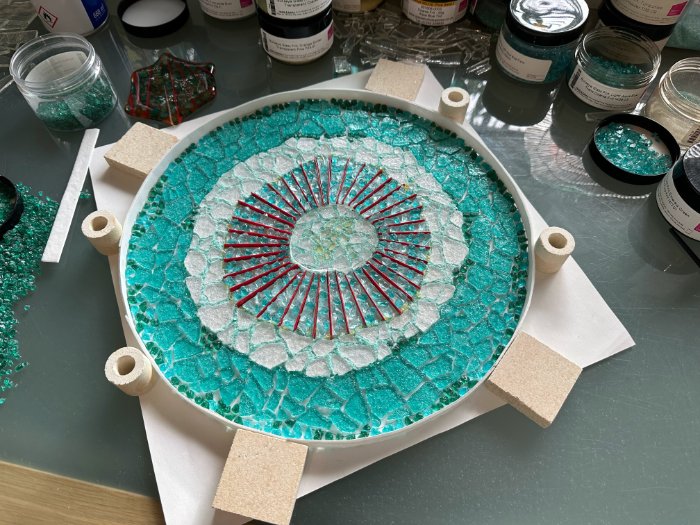
You like to create organic forms. What inspires your work?
My work draws inspiration from the intricate patterns found in nature, which govern their growth and determine their final shape. I find the pure perfection and complexity of how natural forms are constructed mesmerising. I strive to capture this alluring element in my work. I am currently exploring the shapes and patterns found in microscopic plant and tree cells.

What message(s) do you want to convey through your art?
I want to convey the beauty of organic form – its intricate, complex structure – and for the viewer to take time to reflect on the fragility that exists in every living organism. My aim is to create work where detail is discovered gradually – where tiny fragments are as beautiful as the whole and I capture patterns within patterns. I want my work to be mesmerising.
I find it fascinating working with the inherent permanence of glass, which contrasts the temporary and momentary existence of the organic subject matter. You can capture and hold on to a moment of a life cycle, evoking both the sense of fragility yet strength in nature.
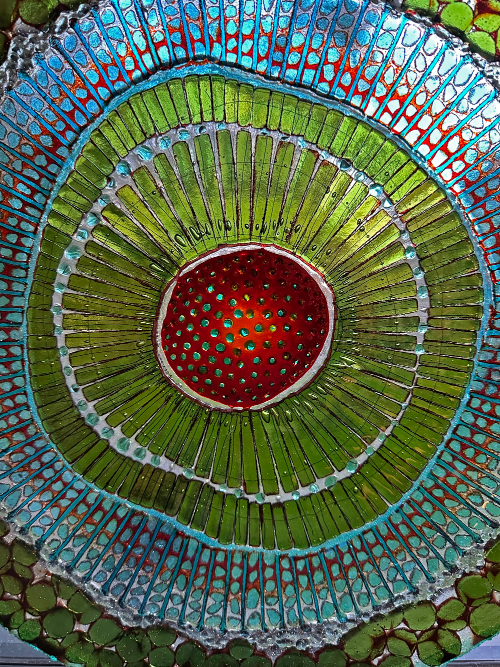
What is your favourite tool or piece of equipment and why?
Aside from my kiln, which is the most magical piece of equipment, I love my humble, flat-head paint brush, which I use for grouting between tiny glass pieces. This part of the making process is very therapeutic and exciting, as I can begin to visualise the finished piece.
My ‘Bullseye Colour Wheel’ is also invaluable. I refer to it daily, looking at colour groups and how they complement each other. This helps me select a colour palette for each piece.

Do you have a favourite piece you have made? Why is it your favourite?
‘Plant Cell #1’ was the first large work I made, after many hours of making test pieces. I strived to create several layers of detailed patterns, which, when the individual layers were fused together, would not lose their pattern definition or flow into each other. I discovered a technique while making this piece that would create this outcome. This has opened an array of possibilities for new work.
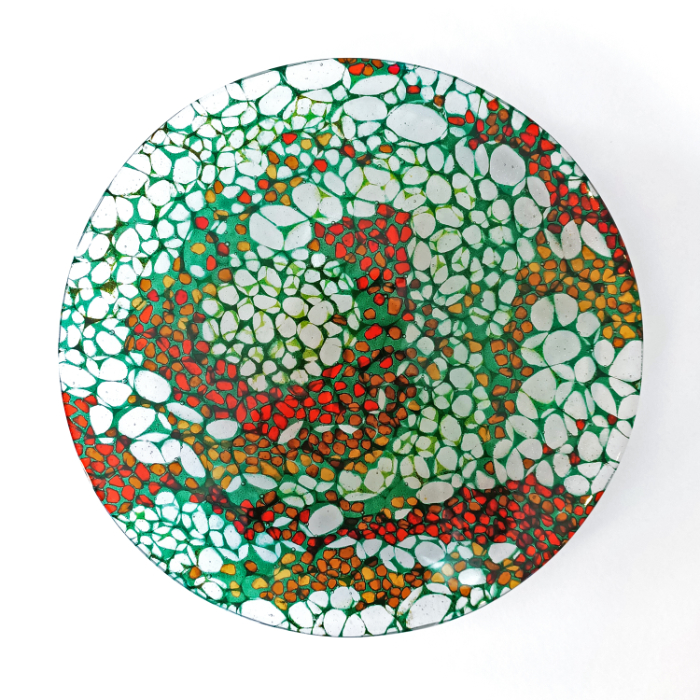
Where do you show and sell your work?
I have exhibited in galleries in the Southwest of the UK, including Black Swan Arts and Thelma Herbert Gallery. I am also a member of UK Glass Art Collective. This group formed in 2023 and we have exhibited twice in 2024, in Bristol and Leicestershire, with further exhibitions planned for 2025/26.
Where is your glass practice heading next?
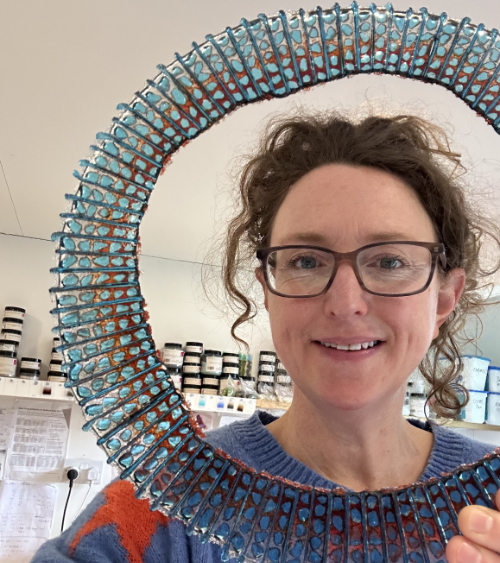
I would like to exhibit more widely in my local area of Bristol, apply to the Art trails and some local galleries in 2025. I will also continue to submit work for regional exhibitions. I would like to work towards having a solo exhibition in the next couple of years.
Find out more about Rachael Durkan and her work via her website: https://theglasscabin.co.uk
Main feature image: ‘Plant Cell #5’ features a shallow slump. All photos taken by the artist.
